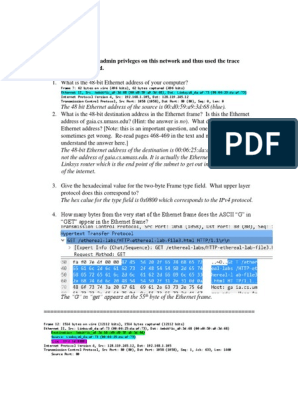0% found this document useful (0 votes)
52 views5 pagesTor Protocol Specification2
1. When establishing a Tor circuit, each relay node sends a NETINFO cell to share address and timestamp information. This helps nodes identify canonical addresses and check for clock skew.
2. To extend a circuit, the client sends an EXTEND or EXTEND2 cell to the last node with instructions and handshake data to create a new circuit leg. This includes link specifiers describing the next hop and identity fingerprints to validate the target node.
3. The last node generates a matching CREATE cell which it sends to the next hop. The next hop responds with a CREATED cell if successful to extend the circuit another hop.
Uploaded by
AZERTYUIOPCopyright
© © All Rights Reserved
We take content rights seriously. If you suspect this is your content, claim it here.
Available Formats
Download as PDF, TXT or read online on Scribd
0% found this document useful (0 votes)
52 views5 pagesTor Protocol Specification2
1. When establishing a Tor circuit, each relay node sends a NETINFO cell to share address and timestamp information. This helps nodes identify canonical addresses and check for clock skew.
2. To extend a circuit, the client sends an EXTEND or EXTEND2 cell to the last node with instructions and handshake data to create a new circuit leg. This includes link specifiers describing the next hop and identity fingerprints to validate the target node.
3. The last node generates a matching CREATE cell which it sends to the next hop. The next hop responds with a CREATED cell if successful to extend the circuit another hop.
Uploaded by
AZERTYUIOPCopyright
© © All Rights Reserved
We take content rights seriously. If you suspect this is your content, claim it here.
Available Formats
Download as PDF, TXT or read online on Scribd
/ 5























































































